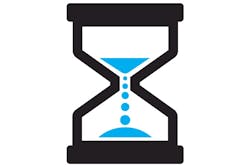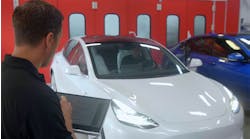It’s fairly common amongst collision repairers to categorize repairs by dollar value or “hours.” Many of us still identify four segments such as $0–$999, $1,000–$2,499, $2,500– $5,000 and $5,000-plus. These monetary delineations then serve to classify our work. These classifications then become the basis for scheduling, dispatching, sales analysis, etc. Does this make sense?
Well, that depends upon what we are measuring. If everything boils down to the “financials,” then putting everything in terms of dollars seems logical. Ironically, it can be this narrow focus that limits its own destiny. Here’s one example:
If we measure sales people on closing ratio and encourage them to focus on the $2,500–$5,000 range, we are by default requiring them to produce estimates (make paper) on virtually everything that walks through the door (otherwise how would you know if you had a $2,000 job or a $3,000 job in front of you)? This requirement drives a waste of time on about 65 percent of the vehicles we fix for the many reasons outlined in prior articles (incomplete parking lot estimates set the stage for stress as they are used to create target delivery dates that are wrong, incomplete parts orders that cause techs to stop shortly after starting, as well as a number of other pitfalls).
“It is not as reliable to make those same determinations (correctly, 100 percent of the time) merely by the dollar value of the job.”—Aaron Marshall, manager, Marshall Auto Body
We typically think of $2,500 repairs (new bumper cover, fix quarter, blend door, etc.) as fairly “easy” four-to-five-day repairs. Some are, but if that job is all suspension, it could easily have four supplements if not analyzed correctly up front. Statistically, classifying work by dollars, or hours, is a very poor measure of the conditions that really matter—measures of variability and complexity.
Consider a $3,500 key job, where both sides of the car require repair and refinish from vandalism. Now think about a $3,500 collision to the left front with some unibody sway. Are the skills required to do both repairs the same? Is the equipment required to fix them the same? Is the complexity in damage discovery and parts count the same? No. It may make sense to throw them both in the same measurement bucket to the accountant, but not the technician, nor a process manager.
The same problem exists when insurers try to delineate “driveable” cars from “non-driveable” cars, and then exact performance metrics unique to each (namely cycle time requirements). A driveable car with lots of broken parts and unibody sway is just as complex, requires a technician that is just as highly skilled, and has just as many opportunities for cycle time–killing supplements as a non-driveable one with the same conditions. Both should be treated the same in terms of production scheduling, tech assignment, and especially damage analysis (repair planning).
It is my opinion that the highest leverage activity for a collision repair process manager is leveling, smoothing, and variability reduction. It starts with bringing the right “size” jobs into the shop (scheduling at the door) and then into production, in the right order. Classifying work by complexity (what kind of tech skills are needed) and equipment required (frame machines, alignment machines, spray booths) helps us order the work, carry out the correct prerepair planning activities (parts pre-ordering and parts prepainting) in a much more logical manner than classifying jobs by dollar value or labor hours.
Classifying the work this way is fundamental to building a variability reducing process: The car goes from a complex mess of broken parts; through a disassembly step, where repair attempts are made, frame damage is corrected, and repair vs. replace questions are eliminated (by “repairing” to a state where no more question exists); then off to a build step where weld-in panels are installed and mechanicals are put back in; then off to a body repair and painting step, a trim reinstallation (reassembly) step; and finally, there’s cleanup and quality control.
Coincidentally, jobs with no structural, no mechanical, no welding, and no more than one panel being painted, average $1,000. Jobs with more than one panel to paint, but no mechanical, no structural and no welding operations, average $2,400. Repairs characterized by welding, structural repair, and/or mechanical work average $4,000-plus. From these triage levels it’s easy to make determinations about which tech is best suited for which job, and which job will require repair planning vs. assigning the job directly from a parking lot estimate. It is not as reliable to make those same determinations (correctly, 100 percent of the time) merely by the dollar value of the job. Getting the triage right from the moment the car rolls onto our property sets the stage for the entire process from that moment forward.
Aaron Marshall manages Marshall Auto Body in Waukesha, Wis. He can be reached at [email protected].



